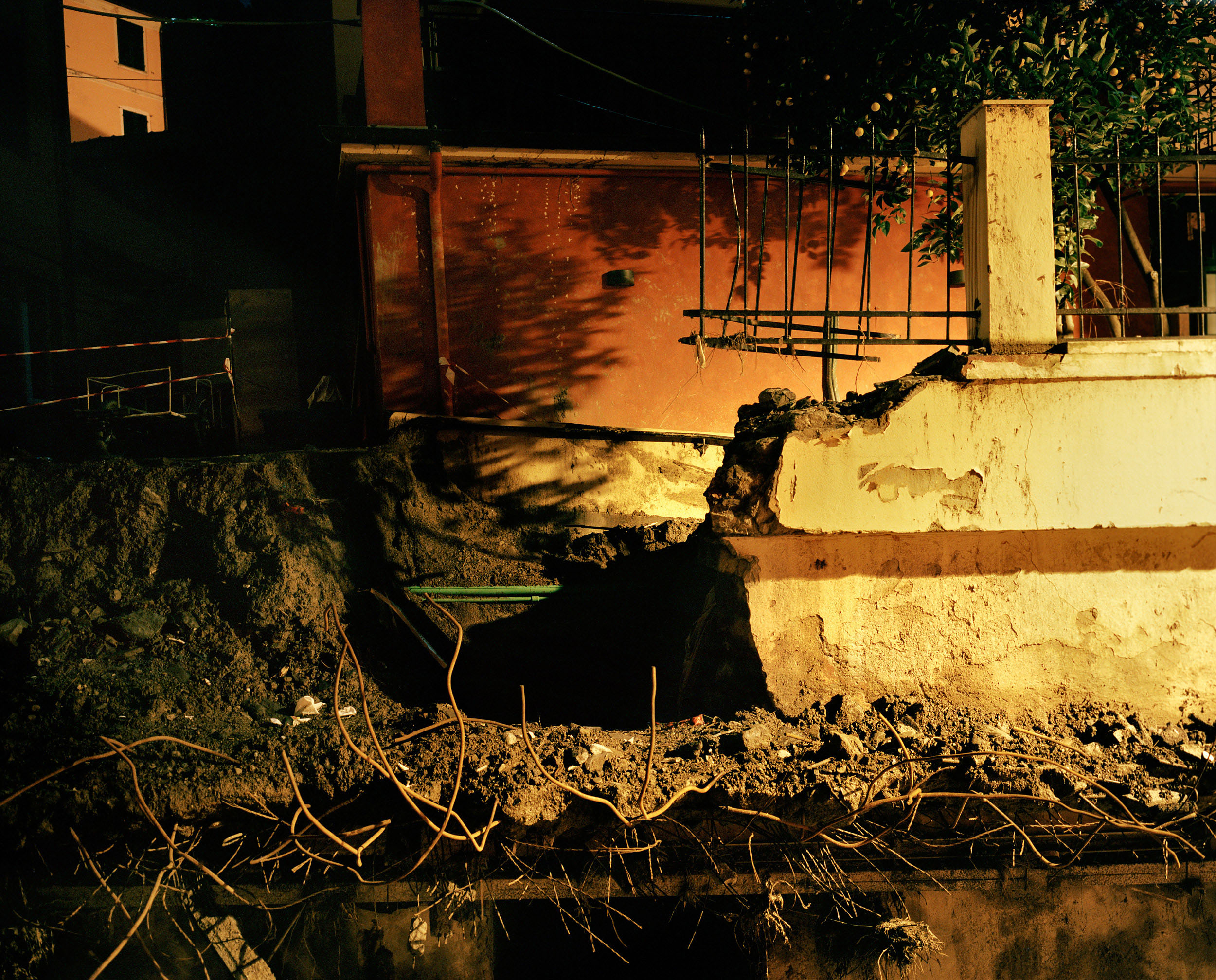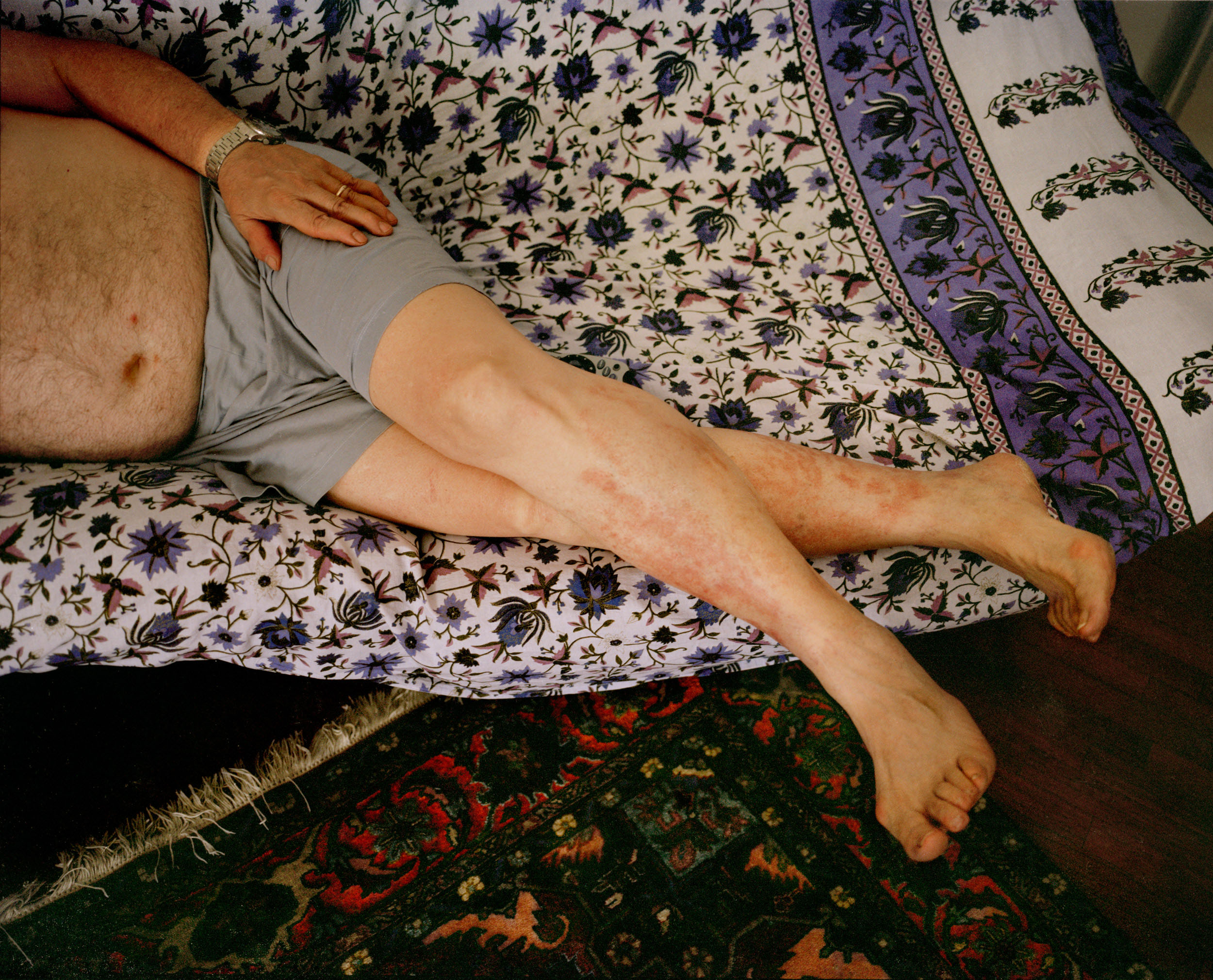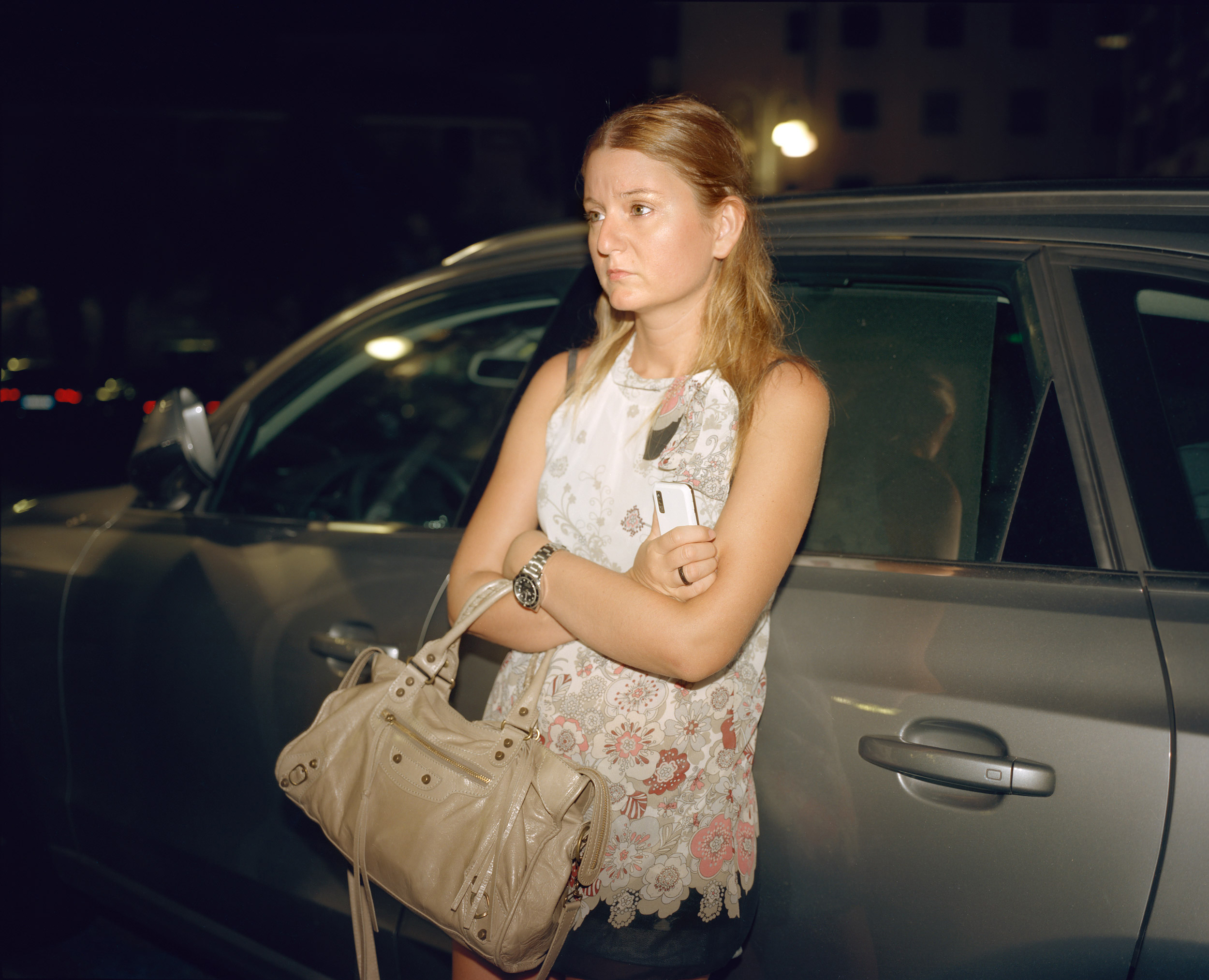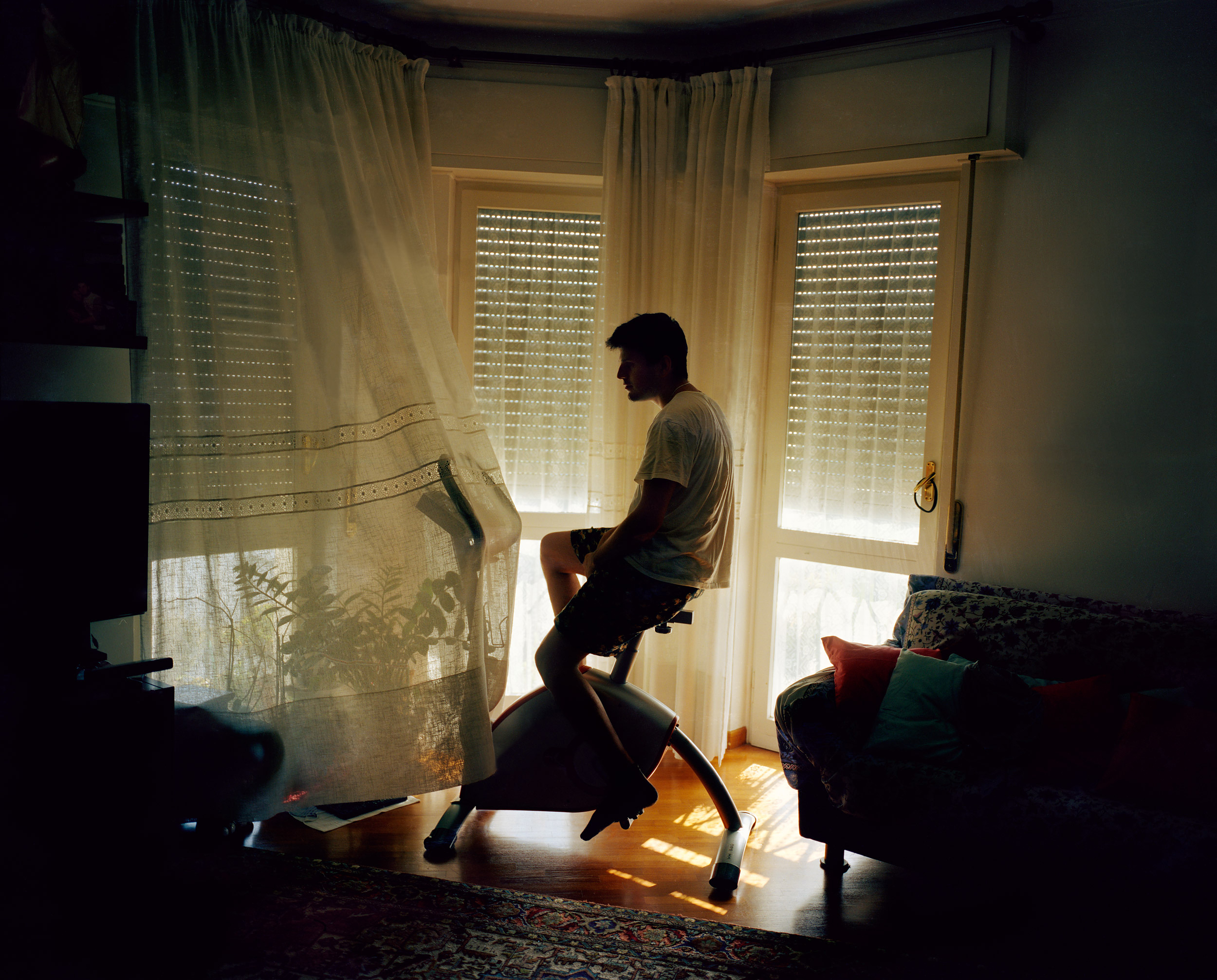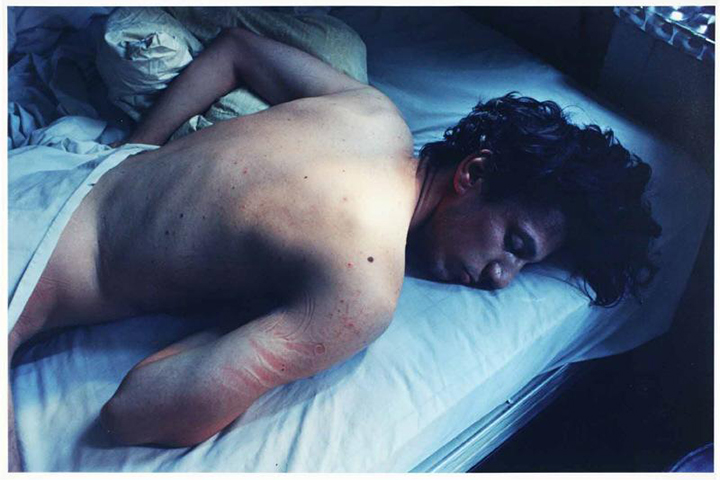The Unflattering Family Album
Tonight, however, I am restless. I sit at the dining-room table; rummage through the refrigerator. What am I looking for?
All day long I’ve been scavenging, poking around in rooms and closets, peering at their things, studying them. I arrange my rolls of exposed film into long rows and count and recount them as if they were lost. There are twenty-eight.
What drives me to continue this work is difficult to name. It has more to do with love than with sociology, with being a subject in the drama rather than a witness. And in the odd and jumbled process of working everything shifts; the boundaries blur, my distance slips, the arrogance and illusion of immunity falters. I wake up in the middle of the night, stunned and anguished. These are my parents. From that simple fact, everything follows. I realize that beyond the rolls of film and the few good pictures, the demands of my project and my confusion about its meaning, is the wish to take photography literally. To stop time. I want my parents to live forever.”
- Larry Sultan, Pictures From Home (1992)
Introduction
In Larry Sultan’s book Pictures from Home, we see family snapshots mixed with texts and pictures that the son took of his parents, a wealthy American couple in their 1970s living in Palm Springs, a suburban town in the West Coast of America, during the Reagan era. We immediately recognize that this book is a family album, but we aren’t overwhelmed by the usual beautiful and tender memories, we don’t see the celebration of family values, nor the love and happiness that usually fill the pages of our albums. Nobody is smiling (they were instructed not to). There is green carpeting in the house of this golf-obsessed, tanned old businessman, who was forced into early retirement after serving as vice president of Schick Razor Co. Sometimes the couple is arguing, more often they are disconnected, repairing the hoover, reading papers, or watching TV. The camera diligently registers the make-up on an old face; the messy kitchen table, office desk, and bedside cabinets; the gross raw turkey for Thanksgiving. Isn’t this the banality of life? How tacky is the American dream? Larry Sultan started from his sociological criticism of the capitalistic family mythology, but soon found himself trapped into restlessly documenting every single aspect of normalcy that common family albums tend to hide.

Other photographers’ family albums can be unsettling or unflattering too. Sally Mann has in the past been criticized for her book Immediate Family, 1992. Her work has always been stunningly beautiful, with black and white large format photographs, that she prints herself in her home in Virginia. The pictures of her own children have been judged too sexual or controversial. The children are almost always naked but what is really problematic is that these children do not look like children. They do not seem innocent. They show a complex psychology and a great variety of expressions that we more easily associate with adult life: they can be angry, lascivious, tough, mysterious, eerie, vain, flirtatious, playful, sick, and even bloodied or injured. Sometimes we perceive shadows or water as a premonition of death or danger. Mann’s work has prompted the question: "It May Be Art, but What About the Kids?" Her last work is Proud Flesh, which explores the aging of her own husband presenting late-onset muscular dystrophy. He agreed to be photographed with no reserve and the couple truly believes in the power and importance of this work. In Sally’s words: “I look, all the time, at the people and places I care about, and I look with both ardor and frank, aesthetic, cold appraisal. And I look with the passions of both eye and heart, but in that ardent heart, there must also be a splinter of ice.”
A splinter of ice. These words resonate in me. Why would a photographer want to document his or her family story by creating such a family album? And, is it socially and ethically acceptable?

As a Photographer
Many photographers have turned their lens towards their own families. They didn’t just record birthdays and celebrations, or take photos only of their immediate relatives at their most triumphant moments. They used the familiar to investigate life as a deep and complex experience, and left viewers with a document, sometimes a hymn, that explores and unveils something true about the lives of everybody. Sometimes these photographs are a consolation, at other times they remind us of the impossibility of escaping from our own passions, mistakes and mortality. Sometimes these images are warm and comforting, other times they are uncanny or unforgiving.
As soon as I finished the documentary photography program at ICP, I felt the urge to return to my family in Liguria, Italy, with a camera. The program left me with many good questions: Which were the stories I wanted to tell as a photographer? What was the purpose of my work? How did I want to pursue my career? My ideas weren’t clear. I felt lost, until I had the intuition that it could be more real (and perhaps easier) to find myself and some sort of rough truth about life in my own “backyard,” rather than in some unknown, exotic country. I wanted to start looking at the world all over again, to go back to my childhood, to who I was, and to photograph what I knew and what I cared about. I had childhood memories of this paradise called Liguria: a narrow strip of land that is bordered by the Mediterranean sea and the Alps. Its stunning mountains tumble rapidly into the sea, leaving only a little slice of land to humans, who through centuries of courageous labor have built numerous fishing villages and even cultivated stretches of farmland. So I went back, after thirteen years of absence. To the smell of sage and rosemary, to the thin shadows of pine and olive trees. I went back to walk barefoot on the slate rocks with the salt drying on my skin.
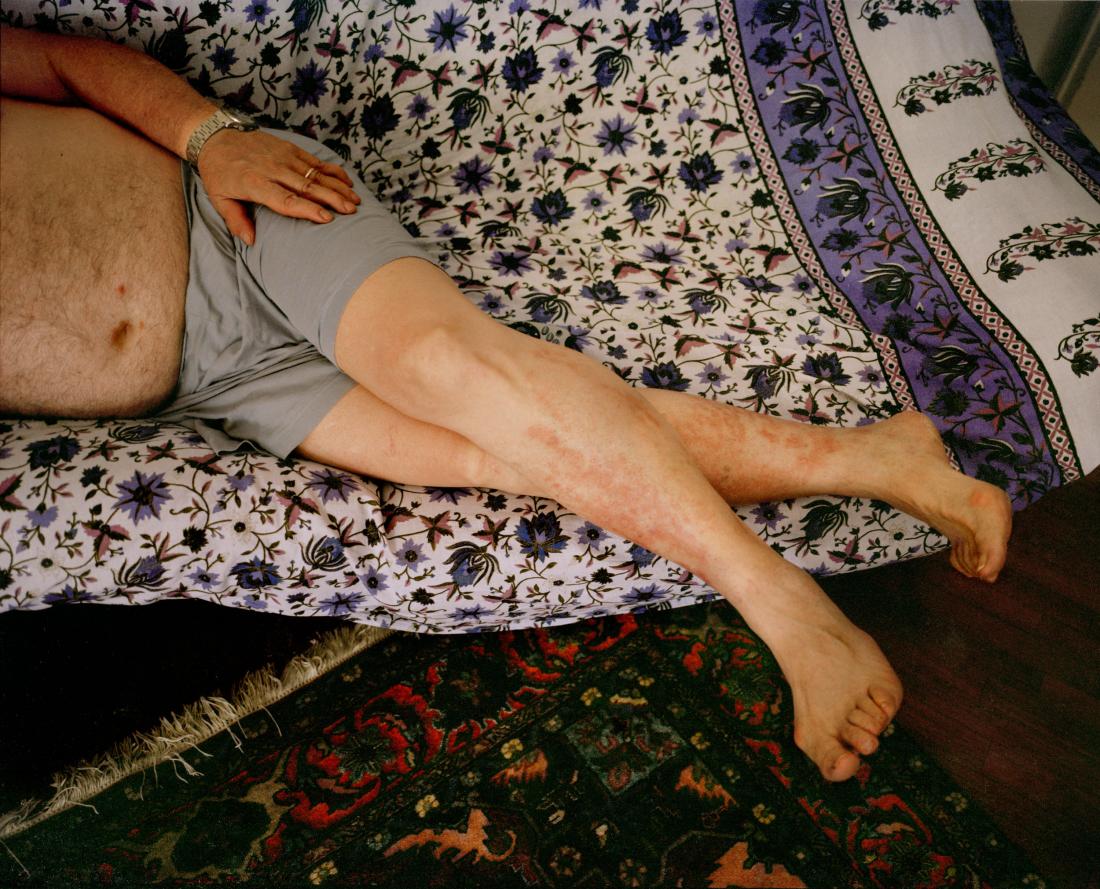
It is dangerous to expect that we could return to a place and find it still as we have it fixed in our memories: it often hides the desire to relive a certain period from our past. The way my mother prepares a tasty dinner with just a handful of herbs, nuts, basil and olive oil is still the same, a centuries-old recipe passed on from one generation to the next, but we are not. The tradition has survived in a world that keeps changing, whilst we keep getting older. I was struck by the unsettling realization that I can never get my mother as she was then back, nor can I recover the idealism and dreams of my friends, or my own childhood innocence. When I came back to Liguria, before my grown-up eyes I could see the economic crisis in Italy, where little hope for the future was linked to a lack of trust in the current political system and in the concept of justice. My region was hit by a severe flood. Due to bad urban planning and neglect of the inland, there were about ninety-five landslides that destroyed two historic towns and damaged several others. At the same time, I found my grandfather’s village almost deserted because the young were (and still are) increasingly moving away from the countryside to seek job opportunities in the main cities. Simply by looking deeper and photographing our ordinary life, I was witnessing people bonding and battling with themselves and with nature. Looking for purpose in our lives was like trying to find meaning in the shapes of clouds, patiently observing them and interpreting their metamorphoses. Weren’t all the stories and all the struggle of human experience contained in my family and my simple hometown? Wasn’t this the best story I could document, because it was my own?

And still, it was incredibly hard for me to take photographs. I felt like an intruder in my own house, crossing some kind of boundary that I was not supposed to. The camera suddenly became a sharp razor: a heartless machine recording and exposing the private, the intimate, the uncomfortable, and the imperfections of our bodies and of our lives. And I felt guilty.
I remember one night. It’s 3:00 am. I hear a noise in the house. I walk in the darkness until I reach the open bathroom door, and I see her sitting on the floor in front of the toilet. She has been heartbroken lately, and that night she must have drunk a little too much at the bar. Sometimes it’s so easy to feel bad; we’re all so vulnerable. I’m standing in front of her without talking and I see photographically. First, in terms of complementary colors: the tiles of the bathroom are mint-green marble and she’s wearing cute candy pink pajamas over smooth reddish, slightly sunburned, skin. Then I examine the details: her hair is a golden wheat-colored wave, and her smeared make-up has become an elaborate smoky shadow around her eyes. She’s looking at me and with an elegant movement she changes position, still sitting on the floor between the mirror and the toilet. She doesn’t give up her theatrical elegance, not even now. She suddenly says to me: “You can take this picture if you like.” I answer her, “Oh my god! Don’t worry, I wasn’t even thinking about it. I just came to see if you needed anything.”
I did think to take that photograph. I felt that “splinter of ice” inside my heart. I don’t mean that I found myself cold, distant or judgmental. I mean that the emotions and proximity didn’t conceal from me the universality of that moment. While she was leaning back on the bathroom floor, she suddenly became me, she was all the women I have met in my life, the delusions we all go through, and to take that photograph was for me to scream out loud the dignity of human sorrow. She was unique and at the same time, a stand-in for everybody else. The only question in my mind was: is it a good picture? Is it an iconic picture? Can this picture take the weight of such responsibility? The responsibility of allowing everybody to step in and be her in that moment.
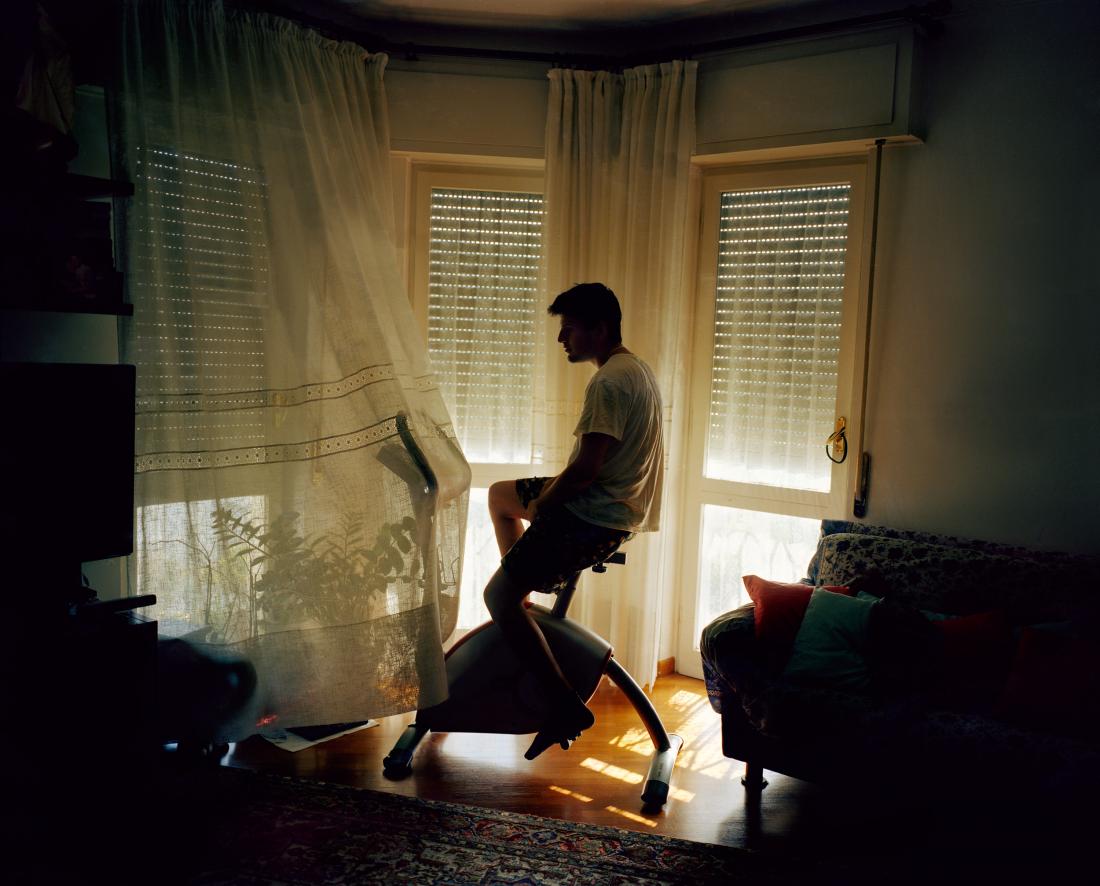
The first time I showed my relatives the photographs I took, they said I made them look miserable. We had many constructive conversations about it, but at first they said I was insensitive of their aging. I argue that it’s rather the opposite. I take photos of what I most deeply love and what I most deeply fear. I’ve been trained to click the shutter when the heart “clicks”. I’ve decided to show the truth and save the beautiful and the important from oblivion. But sometimes beauty can be puzzling or troublesome.
The photographs I haven’t taken are still burning inside me. They want to be taken. They want to be revealed.
As a Viewer
I know that some readers could feel uncomfortable looking at intimate family moments made public. Indeed, looking at aging, looking at diseases, looking at loss and the lost, looking at despair, feels even embarrassing. As viewers, we acknowledge that every time we look at photographs showing intimacy, discomfort, or those many moments in life when we’re struggling or feeling lonely, we feel some sort of shame and think we shouldn’t be looking at such images. It feels impolite to look at photographs of people at times of weakness, and it feels voyeuristic to look at photographs that reveal the bare nudity and normalcy of our bodies and of our lives.
Although the fictions of literature, painting, and theatre and the factual accounts of journalism have long investigated the darkest and most tragic sides of life in order to sensitize us to the pain of others, every time photography does so without celebrating the heroes or the martyrs, or every time photography silently and impartially records the fall and the banality of life, we feel that we are crossing a boundary and breaking a taboo. Why is that? Is it because in photography we get to see the faces of real people? Is it because we relate more directly and more quickly with what has been photographed than with what has been painted or written? Is it because a photograph is captured by a machine and requires some kind of moral censorship afterwards?

First, I believe photography (and moving photographs, the video), of all media, has the strongest link with physical reality. Lenses are designed to reproduce what the eye sees. I can’t take a photograph of something that wasn’t there in front of my camera for at least a fraction of a second. Second, I believe we relate with extraordinary strength to photographs and we do it at a very high speed (a second or less). When we see a photograph we are very quickly forced into a narrow space of relationship and intimacy with what is depicted in that photograph. We can feel strong immediate compassion or disgust because each time we are taken in by the illusion of being actually in front of what is depicted. For this reason, the advertising industry, newspapers, and charities prefer photography as a way of creating a dialogue with viewers and of prompting a reaction in their mind.
Is it the psychological power of photographs that makes us want to push some of them away from us? It seems reasonable that intimate or sorrowful moments would be hard to digest for the viewer of photographs. But why is it easier to look at photographs of natural disasters and wars in foreign countries, than it is to look at a photograph of our friend’s grandmother getting ill? Each day the front page of our newspapers show dramatic photographs coming from all over the world, to illustrate stories of injustice, inequality, and violence in our societies. We are used to seeing more and more horror and violence on TV. Than, why does the photo of the angry child of our fellow citizen provoke such outrage?

It seems to me that what really bothers us is the mirror effect of photographs and the ideas we project of ourselves. More and more in the last century, we have sunk into the comforting arms of the American dream: our goal is to be strong and successful. Advertising experts and politicians know this well, and have always given us the image we want to see of ourselves: the winners, healthy, wealthy, beautiful, and strong. Somebody that failed has become a loser, and somebody that is aging has to be put away and forgotten as soon as possible. We don’t want to relate to these subjects because we don’t want to be them. To raise a mirror and question if pictures of power and happiness are the only pictures that should be allowed to describe ourselves, is to question this set of values and scream out loud that life can be worthy also when you lose, when you’re sick, or when you’re ugly. To explore the misery of our lives not as a tourist, not from top to bottom, but with compassion and identification, with poetry and resilient will, is to give worthiness to the invisible, to the ordinary, to the sacrifice that millions of anonymous people are carrying out this very moment.
Reflecting on The Picture of Dorian Grey, in which the protagonist sells his soul to ensure that his portrait, rather than himself, ages and fades, it seems to me that our society is trying to do the opposite. In times of economic crisis and with southern Europe in despair, we try to keep our image clean and neat and winning, while our bodies and our lives are more and more in pain and struggling. If photography is a mirror, we should be using it to explore and understand who we are and if we’re not satisfied with what we see, we should change ourselves rather than change the picture of ourselves. The artists I mention in this essay have raised that mirror in front of their lives to show their truth about our own society. They have been questioning consumerism and superficiality, the role of children, of aging, of death, and of appearance in our society.
What photography needs, more than moral censorship, is an ethical discourse on photographs.
Recommended
The following is a list of interesting photo albums that explore further what has been discussed in this article. The list is not exhaustive; it aims to provide an example of memorable artists that have shown the complexity and variety of the human gaze upon our own life.
- Larry Sultan’s Pictures from Home
- Sally Mann’s work
- Mitch Epstein’s Family Business
- Tina Barney Photographs: Theater of Manners Theater
- Elinor Carucci’s work
- Doug Dubois’s work
- Nan Goldin’s The Ballad of Sexual Dependency
- Richard Billingham’s Ray's a Laugh
- Alessandra Sanguinetti’s The Adventures of Guille and Belinda
- Gillian Laub’s work
- Angela Strassheim’s Left Behind
- Tierney Gearon’s The Mother Project
- Chris Verene’s Galesburg series
